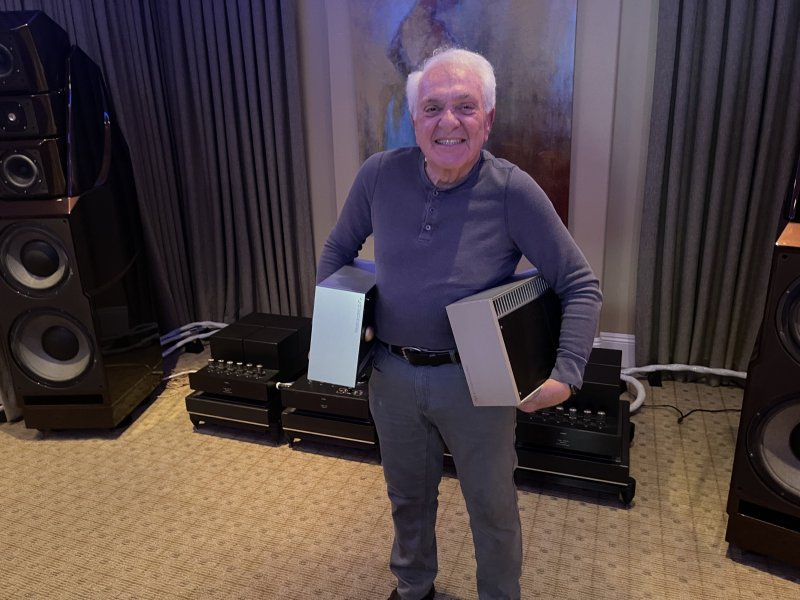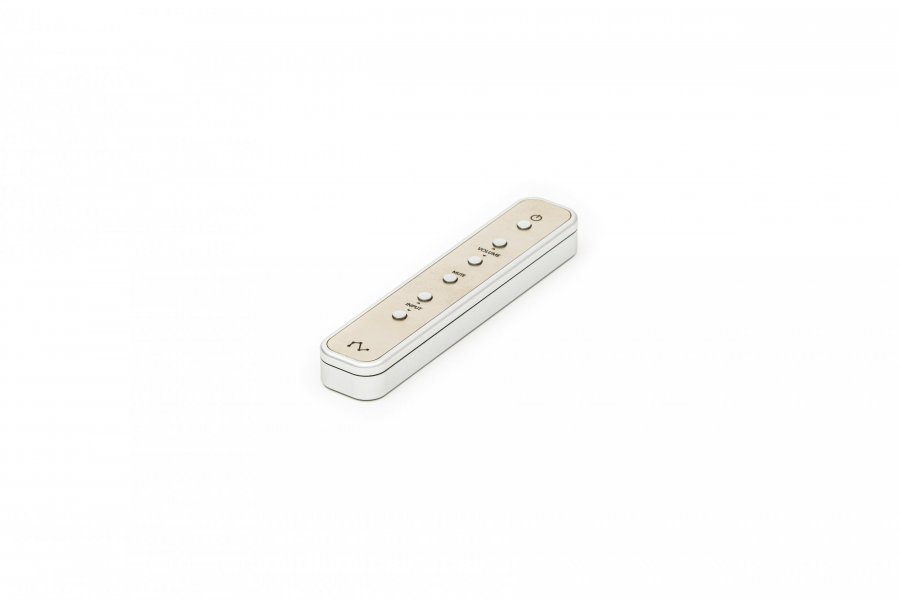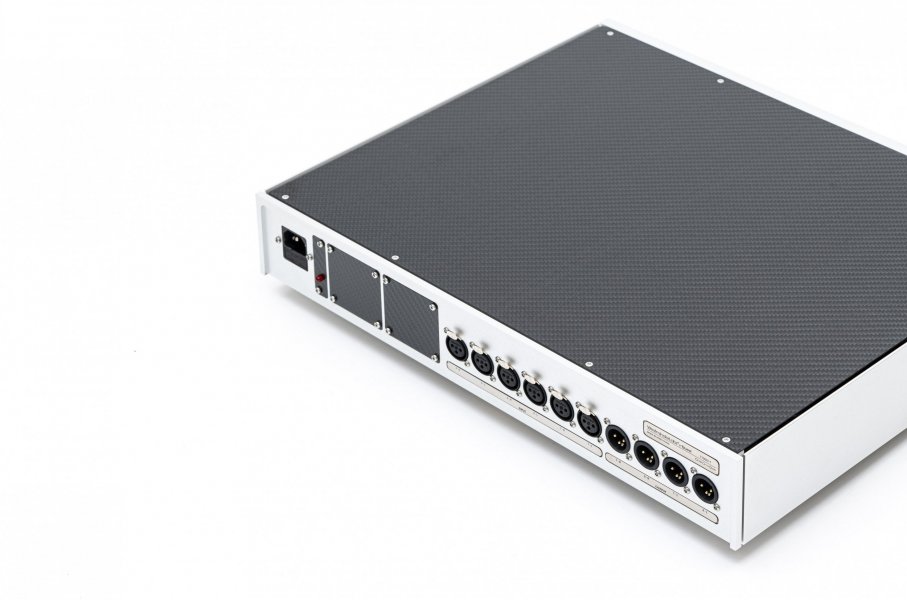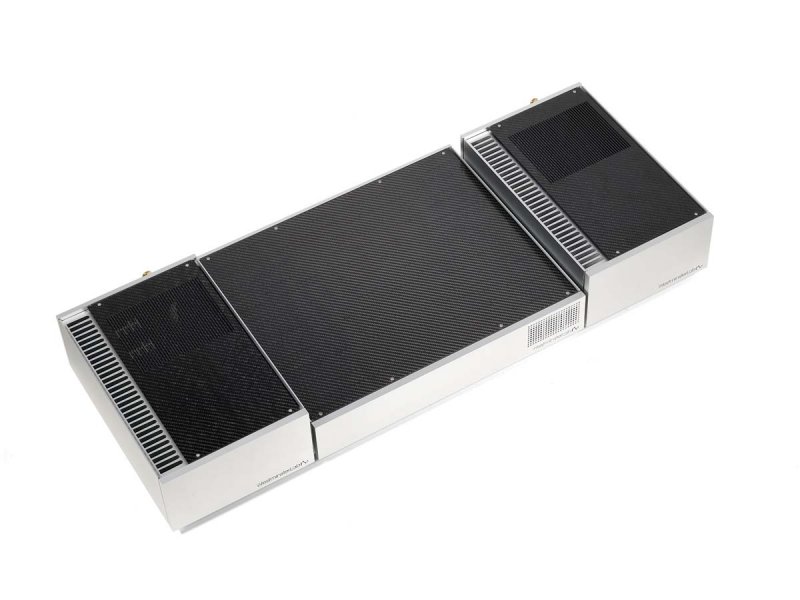Steve Williams
Site Founder, Site Co-Owner, Administrator
Well it's finally today and after a week of waiting I can honestly say that today was a revelation as I heard a giant slayer. Thanks once again to Gary for shlepping this gear from Newport Beach to my house. The reality is that this is far from a schlep as I could carry both these amps up my stairs, oner under each arm. Today I heard the "full Monty" as Gary obliged me when I asked if he would bring the matching Westminster preamp. Not only that Gary also brought with Angus, PC's as well as his speaker cables. We carried everything from curb to my sound room in under 5 minutes.

As to the preamp , what an absolute beauty in the simplicity of design. It was bigger and heavier than the amp and I was told the preamp contained 8 separate power supplies. This visit we had adequate length and type of interconnects and Gary also brought a Star Grounding device which we used
Gary and I listened for 3 hours and this system amp, and preamp is for my ears an absolute game changer. The heat sinks after about 30 minutes were warm at most to the touch. They got slightly warmer but never hot to the touch. What has fascinated me all along reading about this amps how is it possible to be class A yet weigh all of 30 pounds, putting out 100 watts into 8 ohms and 200 watts into 4 ohms (please correct me if this is inaccurate). Gary also talked about strapping a pair of these per channel to increase the output. In my room this is the first time I have had solid state state amplifiers and the last time I owned SS amps was my Krelll 750 mcx, so many years ago. Since that time my system has been 100% tubes. (SET system). I can say that I never once felt lacking for power today with just 100 wpc. I can only imagine how a pair of these per channel would sound
After we placed everything and hooked it all up I was listening to an entire Westminster system. This was one of the best listening sessions I can recall in years. When this happens, I always ask myself, "is it something better or just something different?" Well a whole lot of both actually. These little amps threw such a believable sound stage that I was transfixed. I was looking to find fault with something but I gave up as everything was perfect. Timbre, tone, dynamics were so good and so realistic and the bottom end had such grip that I skipped through we'll over 50 of my demo tracks looking for fault. The more I listened the more I was convinced that whatever new technology Angus has used in the development of this amp and preamp he has hit a "walk off home run " at his first at bat. Certainly I love the sound of my SET and have no intention of switching paths at this time in my life, I told Gary that people who are assembling a system n ow or looking just for an amp or preamp, they must audition these little amps. They will blow yourmind. I sensed no coloration and there was certainly no distortion regardless of the volume and we cranked the amps and our ears were bleeding when the gain level on the preamp was up only 1/3 of the way on the control. BTW, the preamp is operated by a small thin remote that looks identical to the remote for my Lampi Horizon which was the only source we used today.
I streamed through my Extreme for half the session and then listened to internal files on the Extreme for the balance. of the session.
Gary and I listened to a lot of music today and there were things that I have never heard on songs that I have played 100's of times. The micro and macro dynamics produced a true suspension of disbelief for me today. There was such a sense of grip to the sound, yet the decay was equally impressive as sound trailed off. There was a sense of presence (which I cherish in my system) that was every bit there today.
We initially played the system using my MasterBuilt Ultra speaker cables (which are keepers in my system) and I was getting goose bumps with many of the songs. Switching to Angus SC's produced beautiful sound. I asked Gary if the cables had been burned in and there were about 100 hours on them. I felt the sound continue to improve the more we listened , as these cables settled
In short ....
Class A dual mono amps weighing 30 pounds.........Price &28,900
Preamp that is simply beautiful, sleek yet elegant in design staring at $22,000 and add another $2200 (IIRC) for a phono stage card
Cables were solidly built yet also simplistic in design
Personally, I thought this system to be so good that if I were to buy the amps, I would also buy the matching preamp. These prices are shockingly low for sound that was so wonderful in every way.
Kudos to Gary for developing this relationship with Angus and what I heard today is proof that manufacturers aren't churning out mere variations of the same thing but are developing new technology in keeping with progress and evolution in high end audio. Don't be swayed in a negative way by the price. I have no doubt that these little amps will compete quite favorably with amps priced 5-6 times higher and when strapped, all bets are off

As to the preamp , what an absolute beauty in the simplicity of design. It was bigger and heavier than the amp and I was told the preamp contained 8 separate power supplies. This visit we had adequate length and type of interconnects and Gary also brought a Star Grounding device which we used
Gary and I listened for 3 hours and this system amp, and preamp is for my ears an absolute game changer. The heat sinks after about 30 minutes were warm at most to the touch. They got slightly warmer but never hot to the touch. What has fascinated me all along reading about this amps how is it possible to be class A yet weigh all of 30 pounds, putting out 100 watts into 8 ohms and 200 watts into 4 ohms (please correct me if this is inaccurate). Gary also talked about strapping a pair of these per channel to increase the output. In my room this is the first time I have had solid state state amplifiers and the last time I owned SS amps was my Krelll 750 mcx, so many years ago. Since that time my system has been 100% tubes. (SET system). I can say that I never once felt lacking for power today with just 100 wpc. I can only imagine how a pair of these per channel would sound
After we placed everything and hooked it all up I was listening to an entire Westminster system. This was one of the best listening sessions I can recall in years. When this happens, I always ask myself, "is it something better or just something different?" Well a whole lot of both actually. These little amps threw such a believable sound stage that I was transfixed. I was looking to find fault with something but I gave up as everything was perfect. Timbre, tone, dynamics were so good and so realistic and the bottom end had such grip that I skipped through we'll over 50 of my demo tracks looking for fault. The more I listened the more I was convinced that whatever new technology Angus has used in the development of this amp and preamp he has hit a "walk off home run " at his first at bat. Certainly I love the sound of my SET and have no intention of switching paths at this time in my life, I told Gary that people who are assembling a system n ow or looking just for an amp or preamp, they must audition these little amps. They will blow yourmind. I sensed no coloration and there was certainly no distortion regardless of the volume and we cranked the amps and our ears were bleeding when the gain level on the preamp was up only 1/3 of the way on the control. BTW, the preamp is operated by a small thin remote that looks identical to the remote for my Lampi Horizon which was the only source we used today.
I streamed through my Extreme for half the session and then listened to internal files on the Extreme for the balance. of the session.
Gary and I listened to a lot of music today and there were things that I have never heard on songs that I have played 100's of times. The micro and macro dynamics produced a true suspension of disbelief for me today. There was such a sense of grip to the sound, yet the decay was equally impressive as sound trailed off. There was a sense of presence (which I cherish in my system) that was every bit there today.
We initially played the system using my MasterBuilt Ultra speaker cables (which are keepers in my system) and I was getting goose bumps with many of the songs. Switching to Angus SC's produced beautiful sound. I asked Gary if the cables had been burned in and there were about 100 hours on them. I felt the sound continue to improve the more we listened , as these cables settled
In short ....
Class A dual mono amps weighing 30 pounds.........Price &28,900
Preamp that is simply beautiful, sleek yet elegant in design staring at $22,000 and add another $2200 (IIRC) for a phono stage card
Cables were solidly built yet also simplistic in design
Personally, I thought this system to be so good that if I were to buy the amps, I would also buy the matching preamp. These prices are shockingly low for sound that was so wonderful in every way.
Kudos to Gary for developing this relationship with Angus and what I heard today is proof that manufacturers aren't churning out mere variations of the same thing but are developing new technology in keeping with progress and evolution in high end audio. Don't be swayed in a negative way by the price. I have no doubt that these little amps will compete quite favorably with amps priced 5-6 times higher and when strapped, all bets are off













